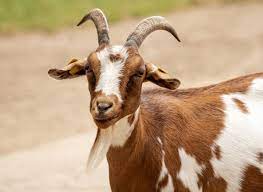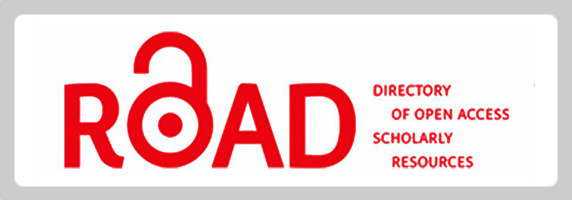A Review on Husbandry Practice and Constraints of Goat in Ethiopia
Abstract
Goats are an integral part of the livestock sub sector in Ethiopia. Rearing of the Goats plays a crucial role in lives of the agrarian and some pastoral communities. husbandry practice/management of the goats include but not limited to housing, herding, feeding, watering and castration. The basic requirement of good goat housing is that it should alter or modify the environment for the benefit of goats and protect them from the vagaries of nature, predation and theft. A good understanding of the community’s herding practices is crucial to bring sustainable improvement to the smallholder’s flock through community-based strategies. Feed resource of goats in Ethiopia varies from natural shrubs and bushes, to conserved hay and crop residues. The variations in feed resources are observed across the seasons as well as the production systems where they are raised. This may be because type and quantity of feed resources in any area depends on environmental conditions and other associated factors. Drinking water is an absolute requirement for goats and an absence of a sufficient supply of water can be a critically limiting factor in animal/goat physiology and productivity. Insufficient water supply causes physiological disturbances and thereby the overall digestibility of the feed consumed. Castration is the blocking of buck’s sperm from testicles to avoid sperm in their ejaculation, which is one of the most important farm activities to prevent unwanted pregnancies in the flock, control aggression, and improve the quality of meat. Goat production in Ethiopia is constrained by several biotic and abiotic causes. Generally, the major constraints facing goat production throughout the country are mostly similar except their importance which varies across different areas.
Downloads
References
Adane, H., & Abebe, G. (2008). Economic significance of sheep and goats. Ethiopian Sheep and Goat Production Improvement Program. Chapter 2, pp. 1-5.
Alefe, T. (2014). Phenotypic characterization of indigenous goat types and their production system in shabelle zone, southeastern Ethiopia (Msc thesis). Haramaya University, Haramaya, Ethiopia.
Alemu, Y. (2008). Nutrition and feeding of sheep and goats. In Alemu Yami and R. C. Merkel (Eds.), Sheep and Goat production Handbook for Ethiopia (pp. 345). Ethiopian Sheep and Goat Productivity Improvement Program (ESGPIP), Addis Ababa, Ethiopia.
Alemu, Y., & Merkel, R. (2008). Sheep and Goat Production Handbook Production Handbook for Ethiopia. Ethiopian Sheep and Goat productivity Improvement Program (ESGPIP).
Alubel, A. (2015). On-Farm Phenotypic Characterization and Performance Evaluation of Abergelle and Central Highland Goat Breeds as an Input for Designing Community-Based Breeding Program Program (Msc Thesis). Haramaya University, Dire Dawa, Ethiopia.
Amani, A.-D. (2017). Towards heat stress management in small ruminants: A review. Annals of Animal Science, 17(1), 59–88. <https://doi.org/10.1515/aoas-2016-0068>
Behailu, S., Sinote, B., & Banerjee, S. (2016). Husbandry Practices of Arsi-Bale Goats In Agarfa District of Oromia Regional State, Ethiopia, 1(5). <https://www.ijasrm.com> (Accessed on October 2017).
Belete, A. (2013). On farm phenotypic characterization of indigenous goat types and their production system in Bale zone of Oromia region, Ethiopia (MSc Thesis). Haramaya University, Haramaya.
Berhanu, G., Hoekstra, D., & Tegegne, A. (2006). Improving the competitiveness of agricultural input markets in Ethiopia: Experiences since 1991. Paper Presented at the Symposium on Seed-Fertilizer Technology, Cereal Productivity and Pro-Poor Growth in Africa: Time for New Thinking 26th Triennial Conference of the International Association of Agricultural Economics (IAAE), August 12-18, 2006, Gold Coast, Australia.
Biruh, T., Kebede, K., & Effa, K. (2017). Traditional goat husbandry practice under pastoral systems in South Omo zone, southern Ethiopia. Tropical Animal Health and Production. <https://www.researchgate.net/publication/313698470> pp. 625–632.
Dawit, A., Assefa, B., Wegi, T., Usman, S., Wamatu, J., & Duncan, A. (2012). Characterization of the livestock production systems and the potential of feed-based interventions for improving livestock productivity in Sinana district, Bale highlands. International Livestock Research Institute (ILRI), Nairobi, Kenya.
Dereje, T. (2015). Morphological Characterization of Indigenous Hararghe Highland Goat Breed in Their Native Environment, West Hararghe, Ethiopia (MSc thesis). Awassa, Ethiopia: Harramaya University.
Duressa, D., Kenea, D., Keba, W., Desta, Z., Berki, G., Leta, G., & Tolera, A. (2014). Assessment of livestock production system and feed resources availability in three villages of Diga district Ethiopia. ILRI: Addis Ababa, Ethiopia.
FARM Africa. (1996). Goat types of Ethiopia and Eritrea. Physical description and management systems. Published jointly by FARM- Africa, London, United Kingdom, and ILRI (International Livestock Research Institute), Nairobi, Kenya 76 p.
Feyissa, F., Tolera, A., Deresse, A., Assefa, T., Geleti, G., & Duncan, A. A. (2014). Assessment of livestock feed production and utilization systems and analysis of feed value chain in Jeldu district. ILRI, Addis Ababa, Ethiopia.
Gebrekiros, H., Kebede, K., Banerjee, A. K., & Welde, Z. (2016). On-Farm Phenotypic Characterization of Begait Goat and Their Production System in Western Zone of Tigray, International Journal of Research and Innovations in Earth Science, 3(1), ISSN (Online): 2394-1375.
Geleti, D., Mengistu, S., Mekonnen, A., Tessema, F., Mulugeta, M., Wolde, S., Abiso, T., Tolera, A., & Duncan, A. (2014). Assessment of livestock feed production and utilization systems and analysis of feed value chain in Lemo district, Ethiopia. ILRI: Addis Ababa, Ethiopia.
Girma, A. (2008). Reproduction in sheep and goats. In Alemu Yami and R. C. Merkel (Eds.), Sheep And Goat Production Hand Book For Ethiopia (pp. 57-72). Ethiopia Sheep And Goats Productivity Improvement Program (Esgpip), Addis Ababa, Ethiopia.
Ibrahim, H. (1998). Small Ruminant Production Techniques (ILRI training manual). ILRI (International Livestock Research Institute), Nairobi, Kenya. 192p.
Kidus, N. (2010). Goat Breeds Utilization and Productivity of Cross breed Goats in Eastern and Southern Ethiopia and Biophysical Model (MscThesis). Submitted to Graduate School of Addis Ababa University.
Markos, T. (2006). Productivity and Health of indigenous sheep Breeds and Crossbreds in the Central Ethiopian Highlands (Ph.D. dissertation). Faculty of Medicine and Animal Science department of Animal Breeding and Genetics, Swedish University of Agricultural.
Mengistu, U., Dahlborn, K., & Olsson, K. (2007). Effect of intermittent watering on growth, thermoregulation and behaviour of Ethiopian Somali goat kids. Small Ruminant Research, pp72:214.
Needham, T., Lambrechts, H., & Hoffman, L. C. (2017). Castration of male livestock and the potential of immunocastration to improve animal welfare and production traits: Invited Review. Department of Animal Sciences, University of Stellenbosch, Private Bag X1, Matieland 7602, South Africa.
Silanikove, N. (2000). The physiological basis of adaptation in goats to harsh environments. A Review. Small Ruminant Research, 35, 181-193.
Sisay, F., & Gebeyew, K. (2015). Sheep and Goat Production Systems in Degehabur Zone, Eastern Ethiopia: Challenge and Opportunities. Journal of Advanced Dairy Research, 3(134), pp.
Sölkner-Rollefson, J. (2003). Community-based management of animal genetic resources with special references to pastoralists. In Proceedings of the Workshop on Community- based Management of Animal Genetic Resources, 7-11 May, 2001, Mbabane, Swaziland, pp. 14-26.
Solomon, A., & Awgichew, K. (2009). Estimation of Weight and Age of Sheep and Goats. Sheep and Goat Productivity Improvement Program (ESGPIP) Technical Bulletin No.23: 11p.
Solomon, A., & Yami, A. (2009). Shelters and housing for sheep and goats. In Merkel RC (Eds), 32nd Technical Bulletin, pp. 1-2. Addis Ababa, Ethiopia.
Solomon, A., Abebe, G., & Awugchew, K. (2008). Sheep and Goat production systems in Ethiopia. In Sheep and Goat Production Handbook for Ethiopia (Ed. Alemu Yami and R. C. Merkel), Addis Ababa, Ethiopia.
Tegegn, F., Alemayehu, K., & Abegaz, S. (2016). Characterization of goat production systems and trait preferences of goat keepers in Bench Maji zone, south western Ethiopia. African Journal of Agricultural Research, 11(30), pp. 2768-2774.
Tesfaye, A. (2004). Genetic characterization of indigenous goat populations of Ethiopia using Microsatellite DNA markers (Ph.D. thesis). National Dairy Research Institute, Deemed University, Haryana, India.
Tsedeke, K. (2007). Production and marketing of sheep and goats in Alaba, SNNPR (Msc thesis). Hawassa University, Hawassa, Ethiopia.
Tsigabu, G. (2015). Phenotypic characterization of goat type and their husbandry practices in Nuer zone of Rambella people regional state, southwestern Ethiopia (A thesis submitted to the school of animal and range sciences, school of graduate studies Haramaya University).
Zelalem, A., & Fletcher, I. C. (1993). Small ruminant productivity in the central Ethiopia mixed farming systems. In Proceedings of the fourth National Livestock Improvement Conference, Addis Ababa, Ethiopia, 13-15 Nov. 1991, IAR, Addis Ababa, pp. 141-147.
Zewdie, B., & Keflay, W. (2015). Reproductive Performance and Breeding Strategies for Genetic Improvement of Goat in Ethiopia: A Review. Greener Journal of Agricultural Sciences, 5(1), pp. 023-033.

Copyright (c) 2024 Zemedkun Diffe

This work is licensed under a Creative Commons Attribution-NonCommercial-NoDerivatives 4.0 International License.










